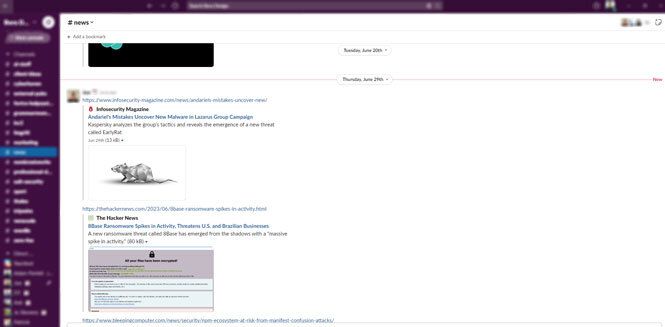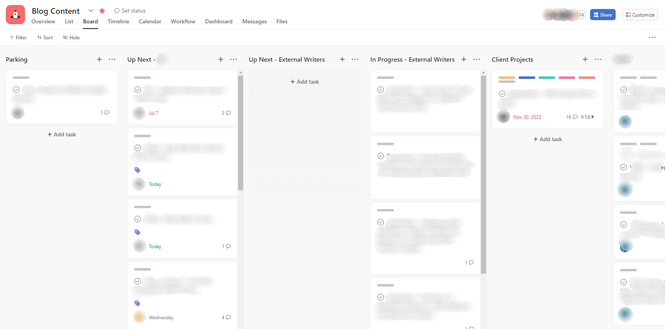Asana and Slack: Transforming Good Internal Communication into Superior Client Service
The aim of marketing is to capture a company’s expertise and share it with a larger audience, enabling the company to broadcast their specialized abilities to retain and attract customers. Many companies do not have marketing resources, or their marketing team is focused on other tasks, so they will seek the skills of an external marketing team to create content to promote their brand.
The art of cybersecurity marketing involves communication, often involving technical and specialized information and expressing it in less technical terms. This is not a mere dumbing down of the ideas, as the readership usually spans all levels of a company, from the C-level to the engineers who need to administer the product and even the people who need to adhere to the effects of a security initiative. Along with this external communication, the key to bringing it all together is by using collaborative tools to the strongest advantage.
A Digital Team
Bora is unique because it has always been a digital team. Our team and our clients are located around the world. In order to function cohesively, we have adapted to the best available technology to help support the team and the clients. There are a lot of great tools that can be used, but the ones that are instrumental to us are Slack and Asana.
Slack
Slack works well because it provides instant communication. We can set up a channel for each client, offering each individual or team to engage and discuss topics that relate to a specific subject or piece. This keeps the ideas unified, allowing us to work more efficiently as a team. The instant nature of the communication enables us to have an internal pre-meeting prior to a client meeting.

Image courtesy of Slack.
We also like to use Slack for lighter discussions within the organization, enabling us to get to know each other better. Since Bora has staff and contributors from four continents, we can get a better worldview, which is especially helpful when creating content. Something as simple as being mindful of phrases that are uncommon for a client in a particular geography can go a long way toward the success of a marketing campaign. We can also be aware of sensitive topics. Along with those, it also gives us an opportunity to learn about each staff member outside of the work environment. This personal touch has also inspired our “employee spotlight” series.
As a practical example, we are working with a client on their backlinking strategy, and there are a lot of moving parts to it. On their side, there’s the VP of marketing who wants to oversee the project but obviously has a lot of things to do, limiting the ability to be involved in the day-to-day running of it. Then, they have an SEO expert who is really driving the specifics of the project and giving us feedback. But then, on our side, we are responsible for creating the content as well as generating ideas. We also have people who manage the placement of the content in external publications. With all of that happening, it is really important that the team can see it all at the same time. It is better than sorting through mounds of email threads.
Asana
The other tool that helps us to manage project timelines is Asana. One of the keys to our success with Asana is that it integrates really well with Slack, allowing for cross-platform visibility. We use Asana to manage all of our work with our writers. At Bora, we have five writers who work with us on a day-to-day basis. We also have external writers, but we mainly use Asana for people internally. We set up a blog content board, from which we perform all of our planning at different levels and can monitor the progression of the work.

Image courtesy of Asana.
The layout helps to streamline the work by giving us clear oversight of each project, showing the due dates for individual pieces, while also expanding to manage larger, long-term projects. Asana also maintains a history of each iteration of a project, from first drafts, through the final version. One of the most useful functions for me is the ability to modify due dates on assignments. This allows me to better prioritize my workflow.
Flexible and Collaborative
There are many tools like Asana and Slack that can help a team to function effectively. While these are designed to facilitate better workflows, like all tools, they are only as good as the people using them. If a group is disjointed, no tool will manage that. Fortunately, the team at Bora practices flexibility and fully lives up to the collaborative spirit. Part of our passion comes from good internal communication, which translates to the superior external communication of our clients’ brands. To learn more about how we can boost your brand, contact us here.




